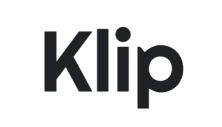We have created the best solution to extract tables from images in 2024. Klip Data Extraction is the solution we use to help customers with table extraction from millions of scanned images. Our experience has been built on extracting metadata from PDF or scanned documents that have tabular data, semi-structured data, and even data stored in tabular structures from those images.
What is the workflow?
We can offer the turn key solution for your extraction requirements. For most customers, this is what we do, but in other cases, we can separate and fragment the processes.
The starting point is the physical document. Together with the customer, we decide what data has to be collected and more importantly how the created database should look. Remember that the new database will be a modified approach to the data the physical document contains.
Scanning the documents
We start by scanning the content. The process usually runs at 300dpi as this allows us to have relatively good quality while maintaining a small scanning size. Sometimes, if the content is really small, we prefer using 400dpi or in some extreme cases even 600dpi. We only do this when we are sure that the OCR process will be improved. File formats can be Tiff, Jpeg, or PDF. We usually prefer to stick to a Tiff or JPEG for the following steps in the digitization process, mainly image processing.
We can also capture relevant data stored in documents you already scanned or you have in PDF form. These do not require scanning again, but we do run them through image processing, just to have a good quality scan before extraction. So yes, retrieving tables from PDFs scanned by customers is possible.
Image processing
So, once we have scanned the images it’s time to process and enhance the quality of the image. We think this step is critical to achieving the best results in terms of data extraction. The better the results of the image processing the higher the accuracy of the OCR process. Once this is done, we send the files to OCR and usually extract PDF searchable documents.
Metadata extraction
These documents are then sent to the actual data extraction process. Here is where the magic happens and where we first do an automatic pass-through, and our solution converts PDF files to readable data. The algorithms we have built help us with automating data extraction in the first phase of collection. This does not mean the work is over, it has just started. Unlike a normal online OCR or those so-called PDF to excel solutions, which never work in practice, we submit the data to QC.
Quality control is where all the documents processed are sent to the manual and automatic validation operators. The manual validation implies data is sent to human operators who check for the accuracy of the process. This phase is critical and is done by surveying the data. Also, what we do is crosscheck operators, to eliminate manual validation errors as well. Lastly, automatic validation is a process in which we have algorithms doing a last check on the data.
As an example of a theoretical experiment, think of a scanned PDF bank statement. Because we are automation experts, we don’t look at a single document, we take more examples of PDF documents which we throw in the mix, and try to make sense of patterns. So your bank statement follows some patterns, and even though the templates may change, the patterns usually remain. That is why our solution looks more like an API document processing tool, rather than your standard extraction software.
